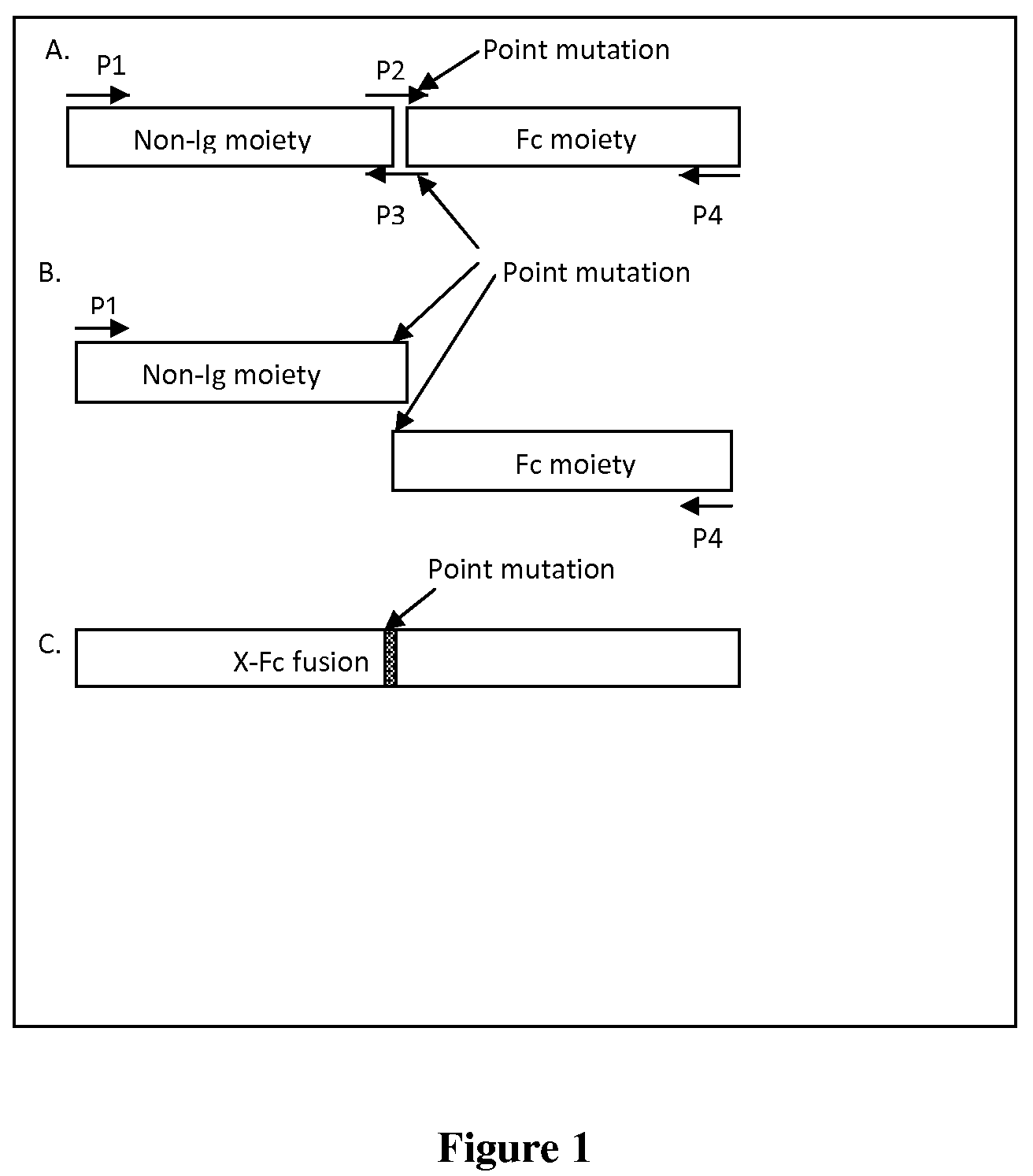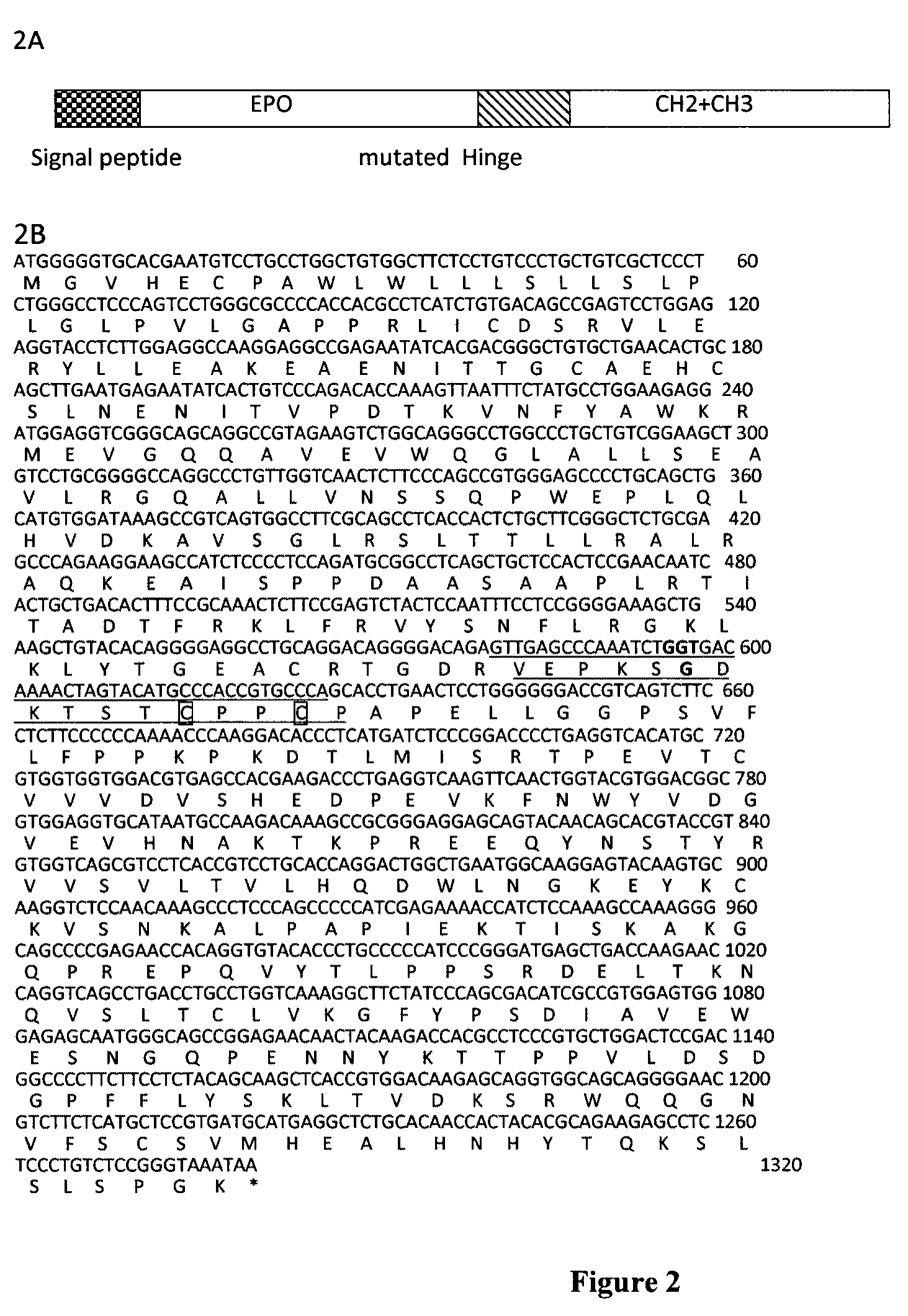Fusion proteins having mutated immunoglobulin hinge region
a technology of immunoglobulin and hinge region, which is applied in the field of fusion proteins, can solve the problems of dose-dependent nephrotoxicity, impair patient compliance, and most recombinant human proteins that cannot survive long enough in vivo
- Summary
- Abstract
- Description
- Claims
- Application Information
AI Technical Summary
Benefits of technology
Problems solved by technology
Method used
Image
Examples
examples
[0069]The following examples will further illustrate the invention in greater detail although it will be appreciated that the invention is not limited to the specific examples.
1. Generation and Amplification of Mutated Nucleic Acid Sequences Encoding the Fusion Proteins rHuEPO-FcG and rHuGMCSF-FcG
[0070]Full length DNA molecules encoding the amino-acid sequence of the polypeptide of rHuEPO-FcG, rHuEPI-FcC (wild type) and rHuGMCSF-FcG were generated by overlapping PCR using the following oligo primers (QIAGEN Inc., US), respectively:
[0071]
EF5:[SEQ ID NO: 7]5′-ccggaattcgccaccatgggggtgcacgaatgtcctgcct-3′EF3:[SEQ ID NO: 8]5′-ttttccttttgcggccgcttatttacccggagacagggagag-3′EFL5:[SEQ ID NO: 9]5′-aggcctgcaggacaggggacagagttgagcccaaatctggtgaca-3′EFL3:[SEQ ID NO: 10]5′-tgtcaccagatttgggctcaactctgtcccctgtcctgcaggcct-3′EFL5w:[SEQ ID NO: 11]5′-aggcctgcaggacaggggacagagttgagcccaaatcttgtgaca-3′EFL3w:[SEQ ID NO: 12]5′-tgtcacaagatttgggctcaactctgtcccctgtcctgcaggcct-3′GF5:[SEQ ID NO: 13]5′-actgaattcgccaccat...
PUM
| Property | Measurement | Unit |
|---|---|---|
| molecular mass | aaaaa | aaaaa |
| molecular weight | aaaaa | aaaaa |
| molecular weight | aaaaa | aaaaa |
Abstract
Description
Claims
Application Information
 Login to View More
Login to View More - R&D
- Intellectual Property
- Life Sciences
- Materials
- Tech Scout
- Unparalleled Data Quality
- Higher Quality Content
- 60% Fewer Hallucinations
Browse by: Latest US Patents, China's latest patents, Technical Efficacy Thesaurus, Application Domain, Technology Topic, Popular Technical Reports.
© 2025 PatSnap. All rights reserved.Legal|Privacy policy|Modern Slavery Act Transparency Statement|Sitemap|About US| Contact US: help@patsnap.com



